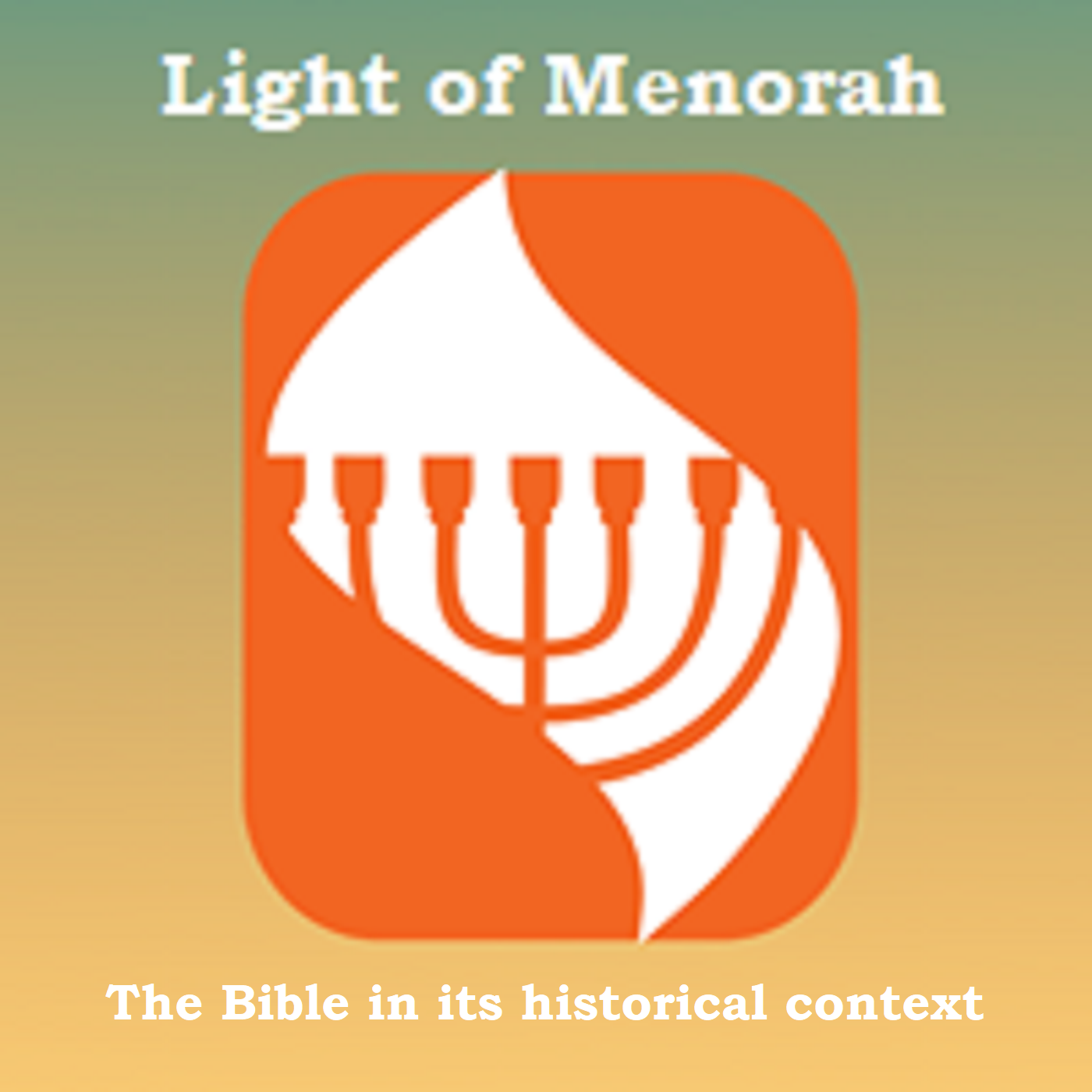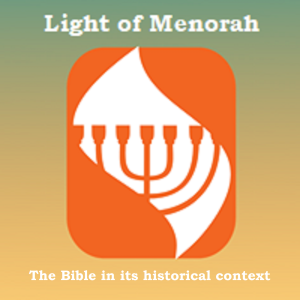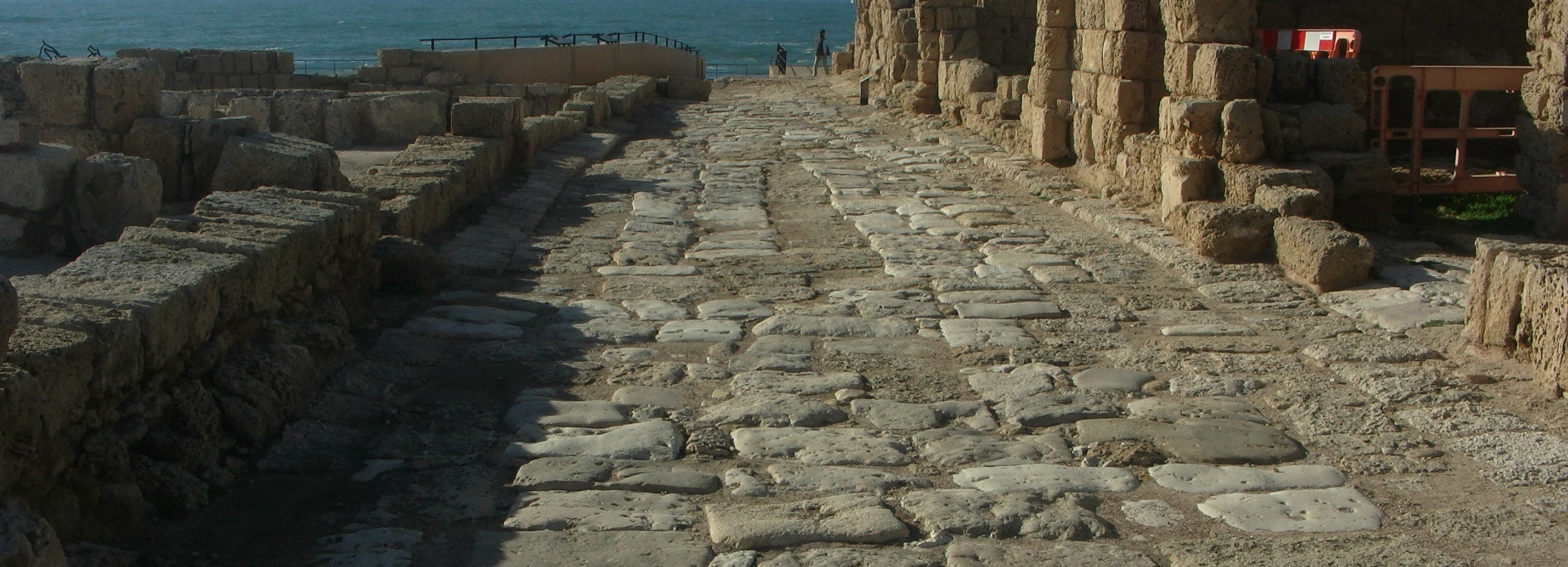
27.2K
Downloads
382
Episodes
The study of the Bible in its historical context - with a focus on the archaeology, history, geography, customs , culture, and even the languages of the ancient Middle East. WE ask what did they understand THEN - the original intent of the Lord - so that we can expand and enrich our understanding NOW and thus become true disciples of Adonai Yeshua as in John 8:31-32.
Episodes

Friday Nov 12, 2021
Genesis 49 - The Chiasm of Genesis 22:1-19
Friday Nov 12, 2021
Friday Nov 12, 2021

I have so many awesome credible and scholarly resources for my study and research in the Torah, the first five books of the Bible. Again, these books are critical for Christians to study since Jesus said in John 5:39 that ALL scripture testifies of Him. He said it sometime between 24-30 A.D. and all they had then was the Hebrew Scriptures; you know it as the Old Testament. Then the five books that were the primary books of the Bible was the Torah, the Books of Moses, Genesis, Exodus, Leviticus, Numbers, and Deuteronomy. As we study these books we see Jesus. Without the Hebrew Scriptures, the New Testament is incomplete. The Bible is one book from Genesis 1 to Revelation 22 and it all testifies of Jesus and the writers of the books of the New Testament relied heavily on Torah.
One resource I count on is the Torah commentary by Dr. John Currid. Yes, he is a Christian theologian but, and this is why I use it, John Currid is a proven archaeologist, Egyptologist, and historian. His commentary actually puts the words of Moses in their historical context. Thus, we can learn the who and the what and the how and the when to understand the why as one of my first teachers, Ray Vander Laan, taught me.
Doctor Currid shows something in his commentary on Genesis 22. He shows that Gen. 22:1-19 is a chiasm. Once you understand what a chiasm is then one can return to Gen. 22 and see the main point God is making. The chiasm is shown below. The verses are color coded to show how the verse colored in black are a reflection of the other verses in black. And the verses in red reflect the other verses in red in that the content is connected. The verse in blue are the center of the chiasm, like the point of a pyramid with the first half sloping up to the point and the 2nd half sloping down from the point.
(Gen 22:1)
Now it came about after these things, that God tested Abraham, and said to him, "Abraham!" And he said, "Here I am."
(Gen 22:2)
He said, "Take now your son, your only son, whom you love, Isaac, and go to the land of Moriah, and offer him there as a burnt offering on one of the mountains of which I will tell you."
(Gen 22:3)
So Abraham rose early in the morning and saddled his donkey, and took two of his young men with him and Isaac his son; and he split wood for the burnt offering, and arose and went to the place of which God had told him.
(Gen 22:4)
On the third day Abraham raised his eyes and saw the place from a distance.
(Gen 22:5)
Abraham said to his young men, "Stay here with the donkey, and I and the lad will go over there; and we will worship and return to you."
(Gen 22:6)
Abraham took the wood of the burnt offering and laid it on Isaac his son, and he took in his hand the fire and the knife. So the two of them walked on together.
(Gen 22:7)
Isaac spoke to Abraham his father and said, "My father!" And he said, "Here I am, my son." And he said, "Behold, the fire and the wood, but where is the lamb for the burnt offering?"
(Gen 22:8)
Abraham said, "God will provide for Himself the lamb for the burnt offering, my son." So the two of them walked on together.
(Gen 22:9)
Then they came to the place of which God had told him; and Abraham built the altar there and arranged the wood, and bound his son Isaac and laid him on the altar, on top of the wood.
(Gen 22:10)
Abraham stretched out his hand and took the knife to slay his son.
(Gen 22:11)
But the angel of the LORD called to him from heaven and said, "Abraham, Abraham!" And he said, "Here I am."
(Gen 22:12)
He said, "Do not stretch out your hand against the lad, and do nothing to him; for now I know that you fear God, since you have not withheld your son, your only son, from Me."
(Gen 22:13)
Then Abraham raised his eyes and looked, and behold, behind him a ram caught in the thicket by his horns; and Abraham went and took the ram and offered him up for a burnt offering in the place of his son.
(Gen 22:14)
Abraham called the name of that place The LORD Will Provide, as it is said to this day, "In the mount of the LORD it will be provided."
(Gen 22:15)
Then the angel of the LORD called to Abraham a second time from heaven,
(Gen 22:16)
and said, "By Myself I have sworn, declares the LORD, because you have done this thing and have not withheld your son, your only son,
(Gen 22:17)
indeed I will greatly bless you, and I will greatly multiply your seed as the stars of the heavens and as the sand which is on the seashore; and your seed shall possess the gate of their enemies.
(Gen 22:18)
"In your seed all the nations of the earth shall be blessed, because you have obeyed My voice."
(Gen 22:19)
So Abraham returned to his young men, and they arose and went together to Beersheba; and Abraham lived at Beersheba.
The entire structure is like a two lines. The beginning line slopes down from left to right and ends at a specific point. Once you reach the center, in this case the verses in blue, the rest of the verses are another line sloping down from right to left from the original starting point. Thus, the verses in black are connected by being reflections of each other. See below. This is a chiastic structure of the entire Bible. Pretty cool!! From Patheos.com 2017.

The central focus of the chiasm of Gen. 22 is the “silence” that is inherent in the verse colored in blue. Abraham can’t “see” God’s purpose and Isaac can’t see the sacrifice. God is silent. The father and the son go on together. In the Hebrew the wording suggests they go one with one mindset, one purpose. Abraham to obey God. Isaac to obey is father. They go on seemingly in silence to the amazing things God will show them on the mountain.
What I just wrote is not a sufficient explanation of this chiasm. I leave the listener to study with me in the podcast. Once you have the idea come back and add to what you think the central point God is making.
Rev. Ferret - who is this guy? What's his background? Why should I listen to him? Check his background at this link - click here for the teacher's background

No comments yet. Be the first to say something!